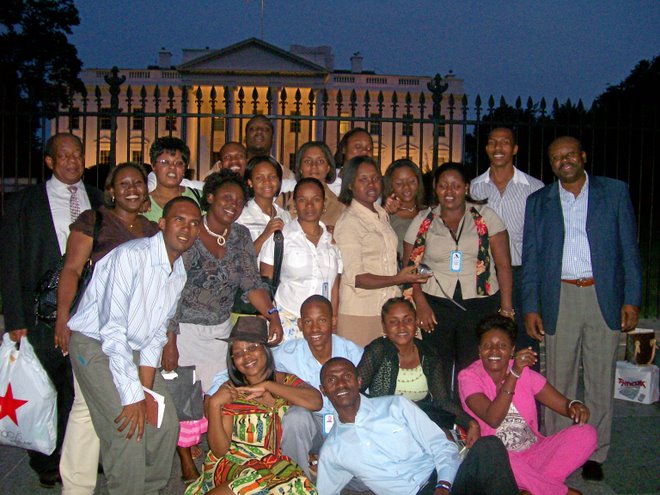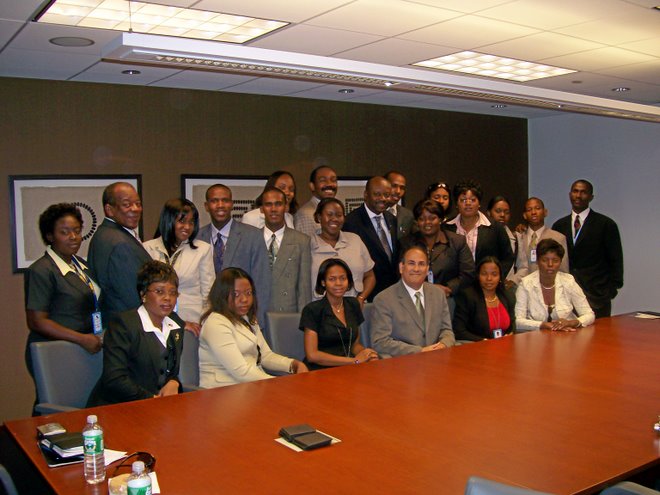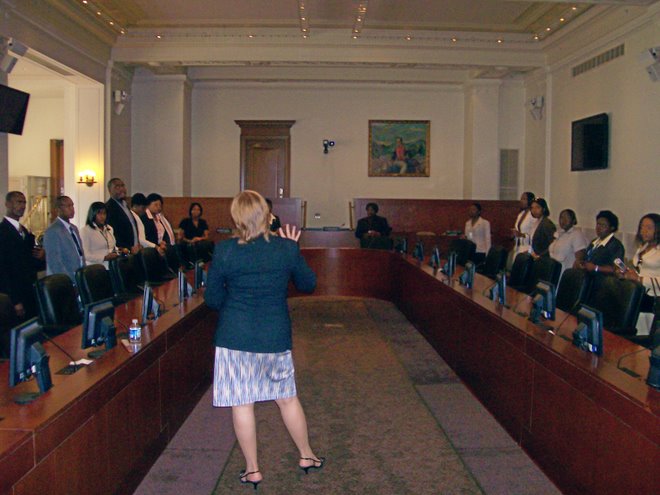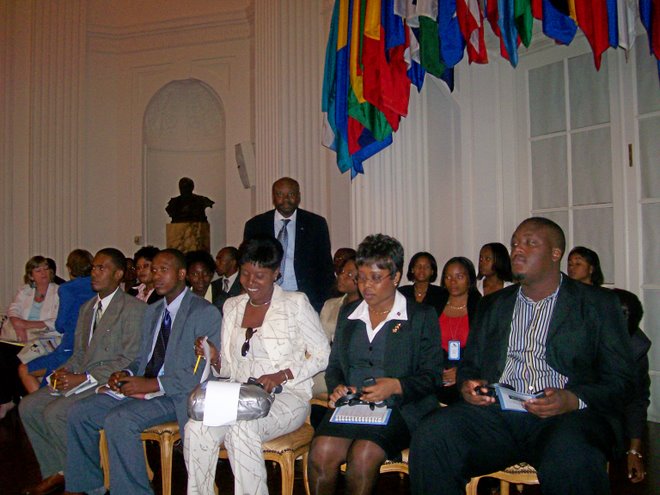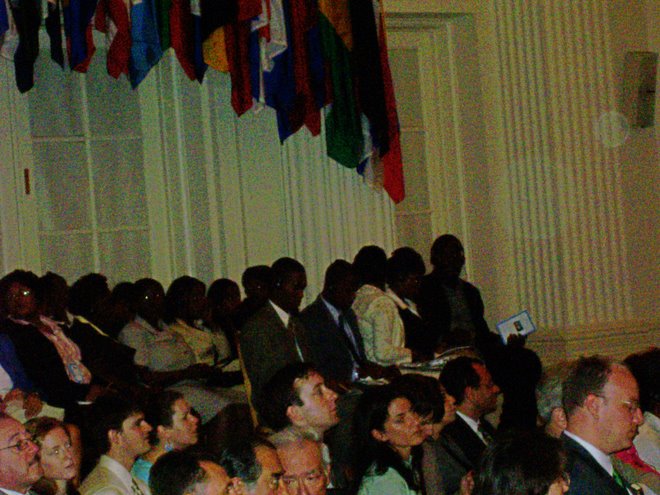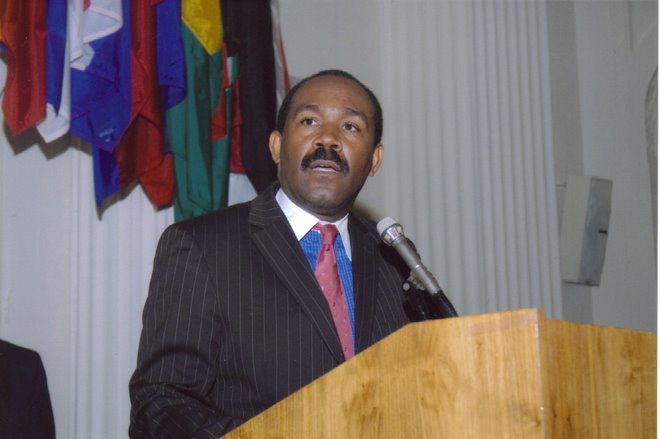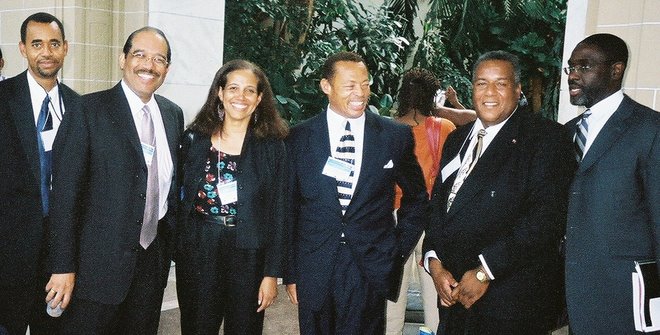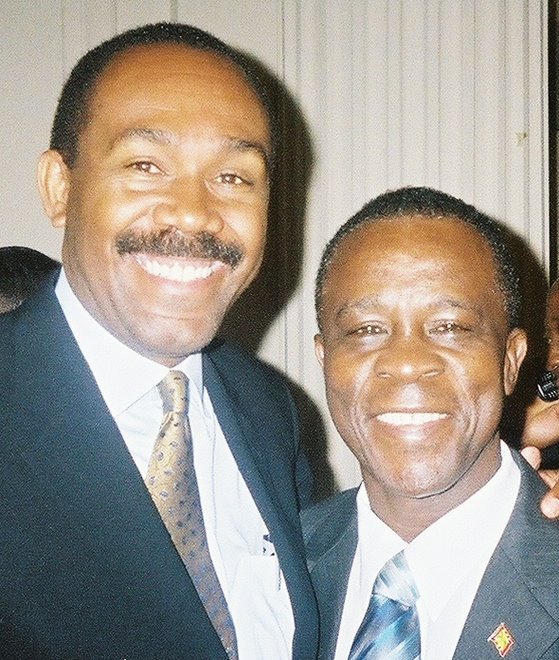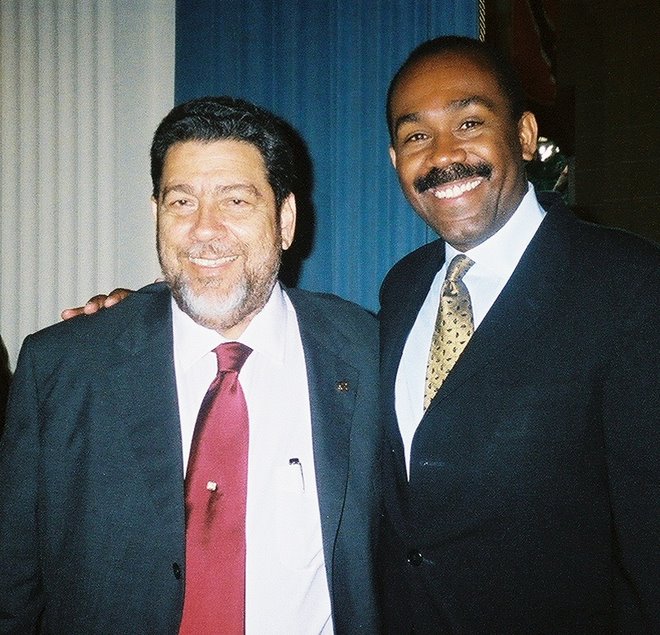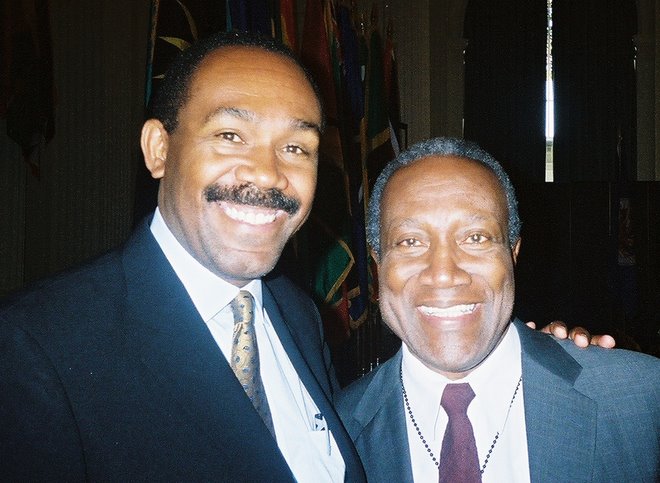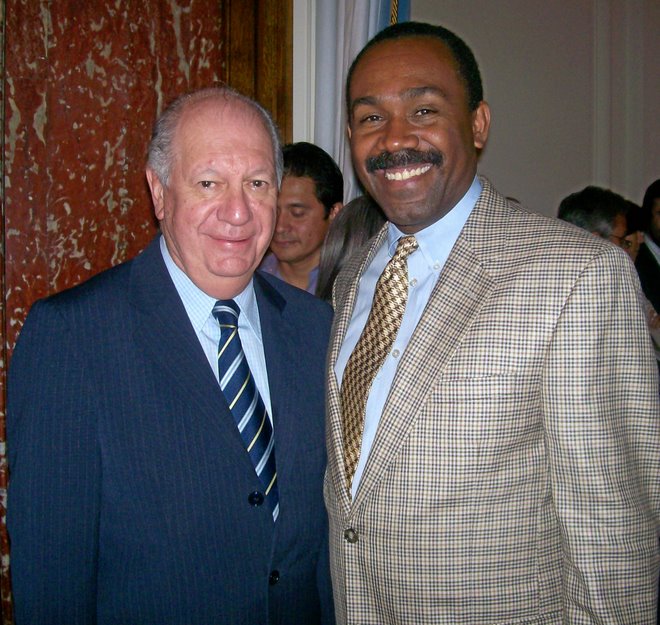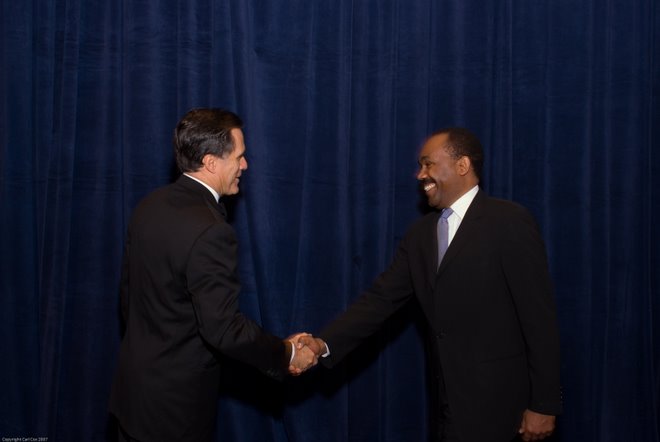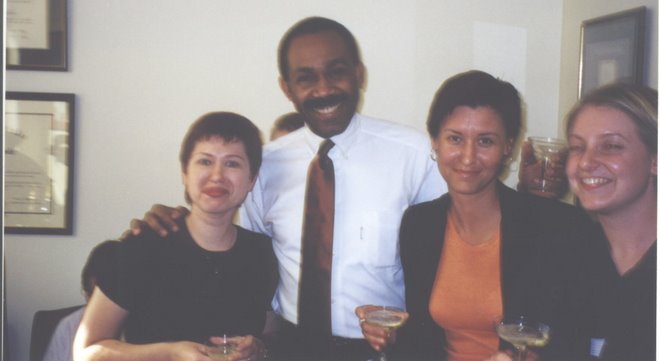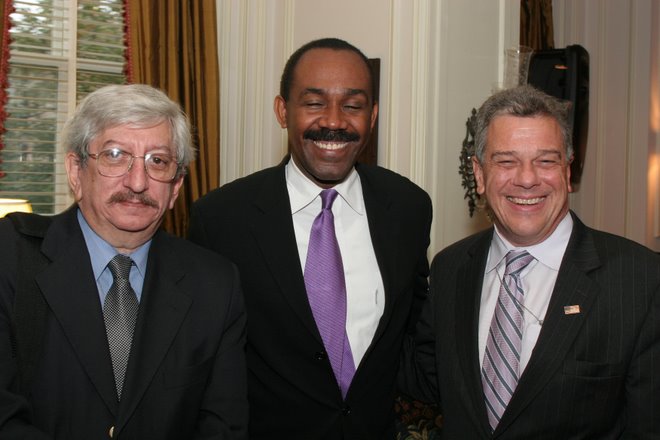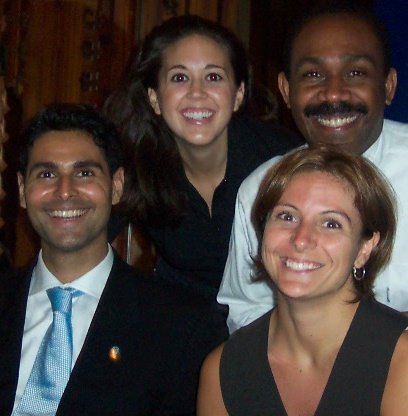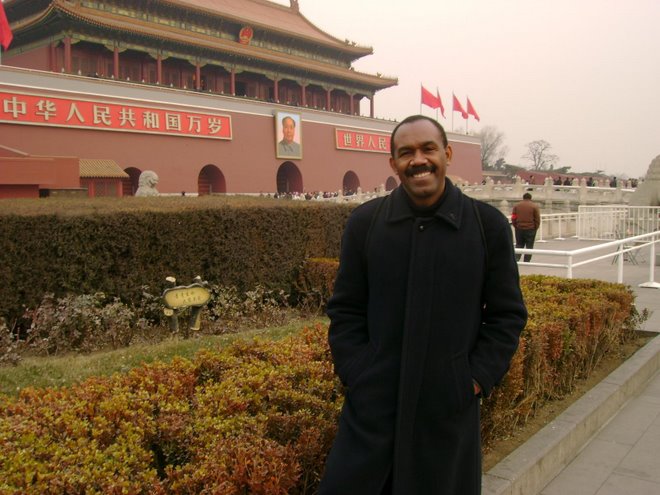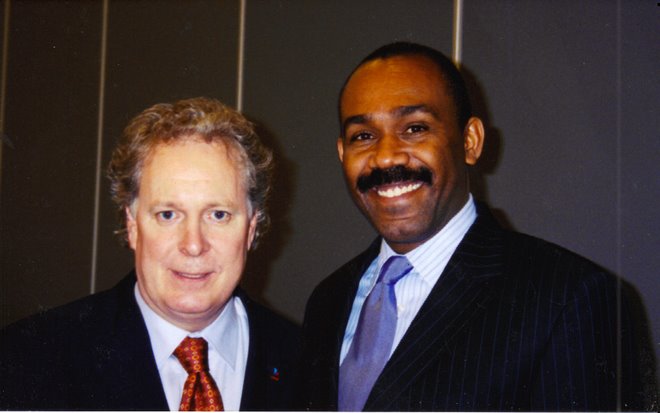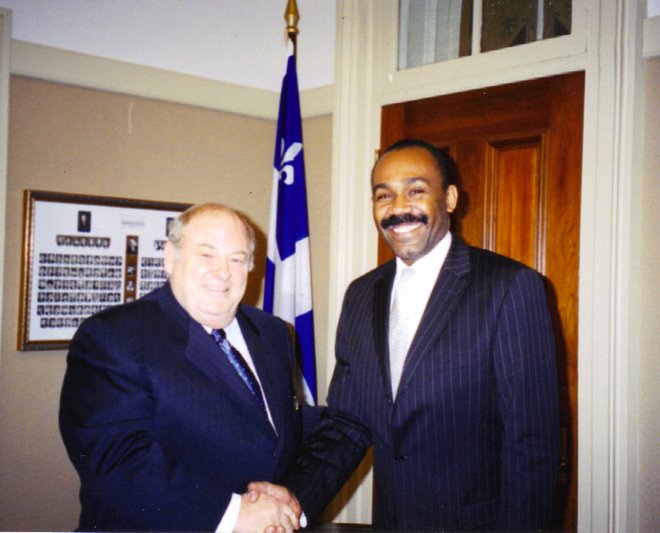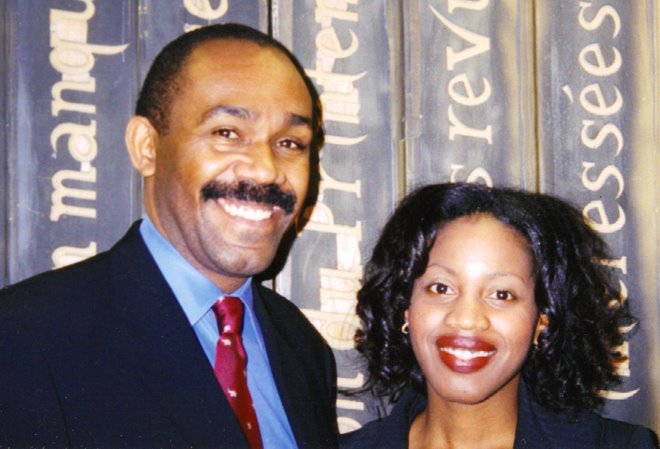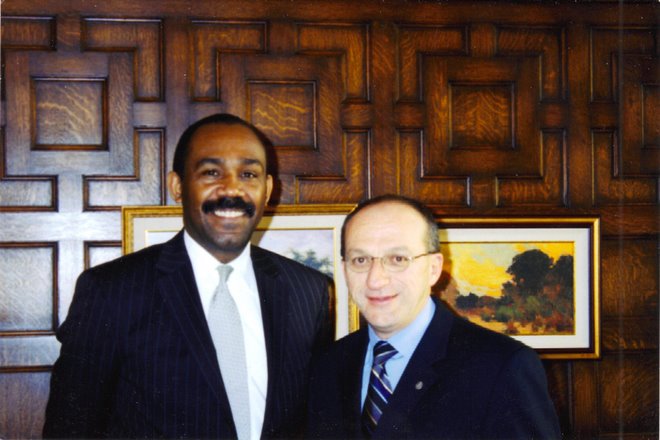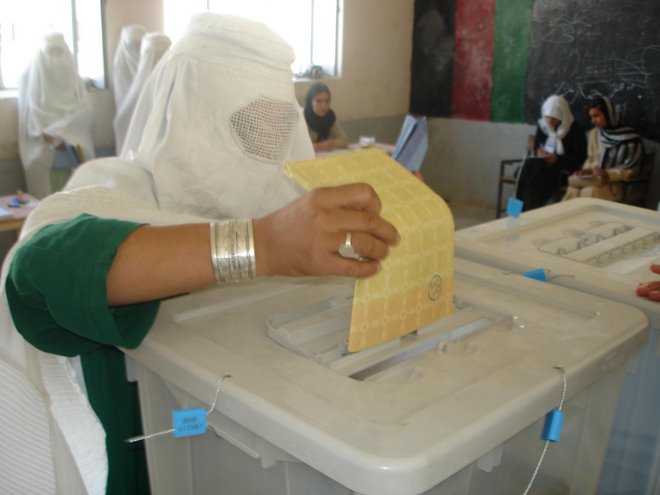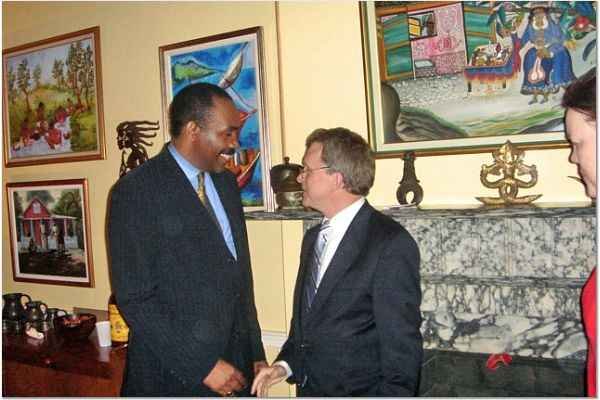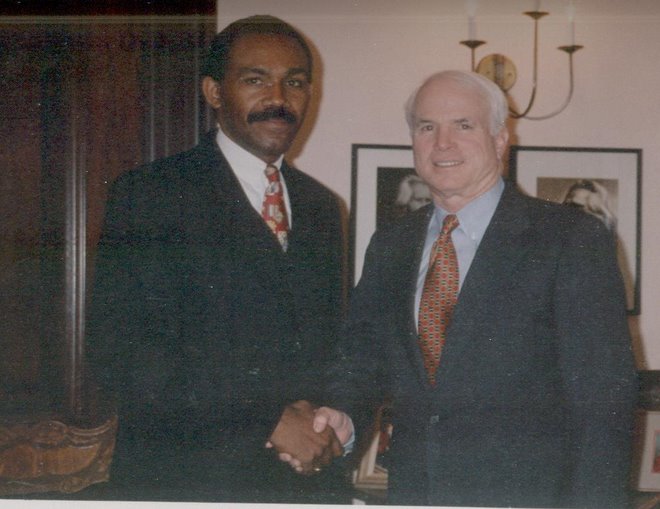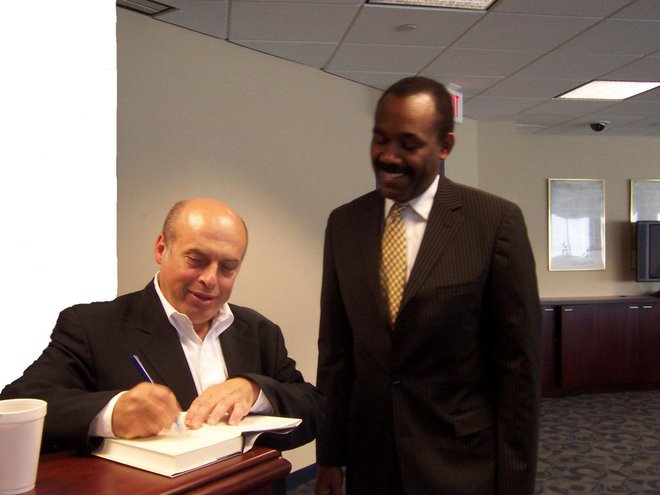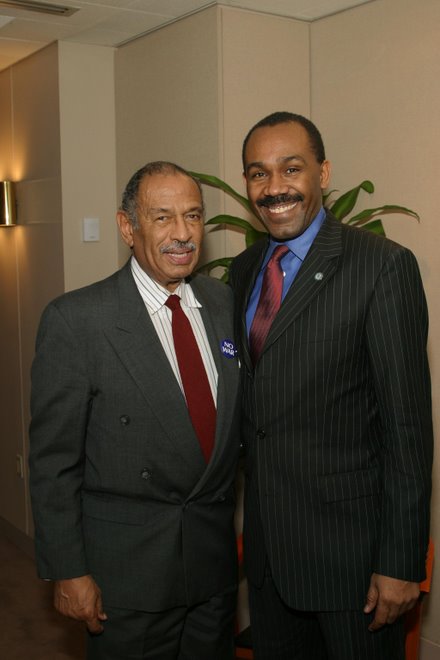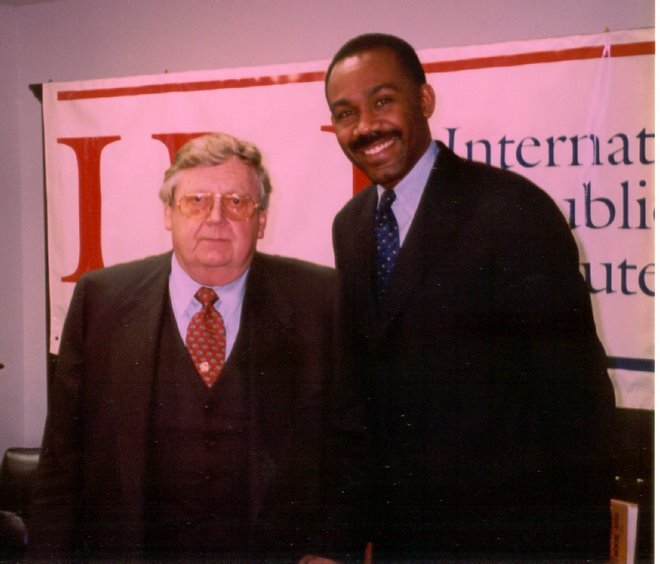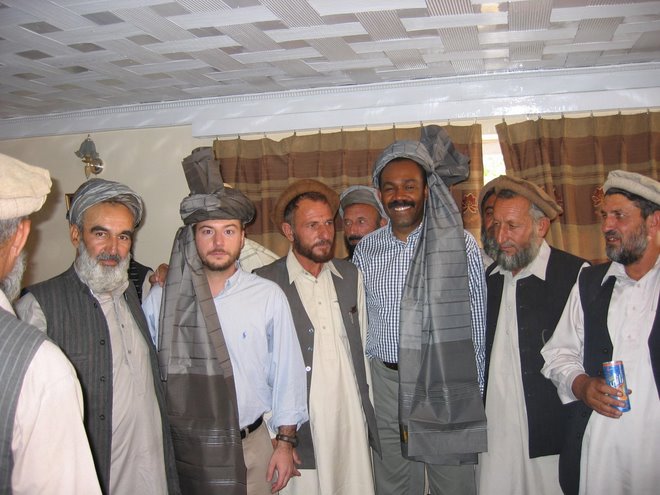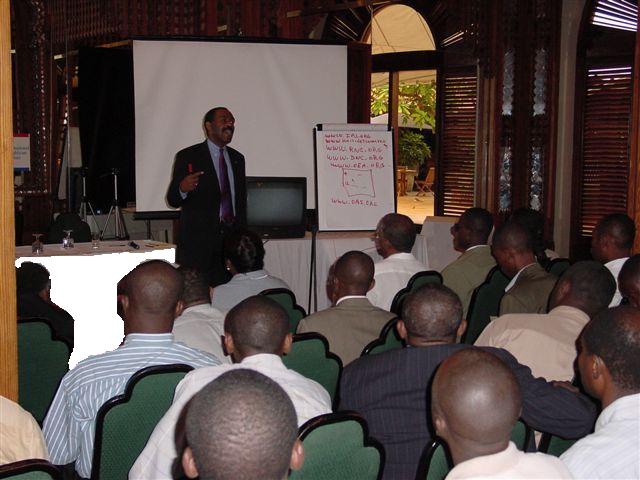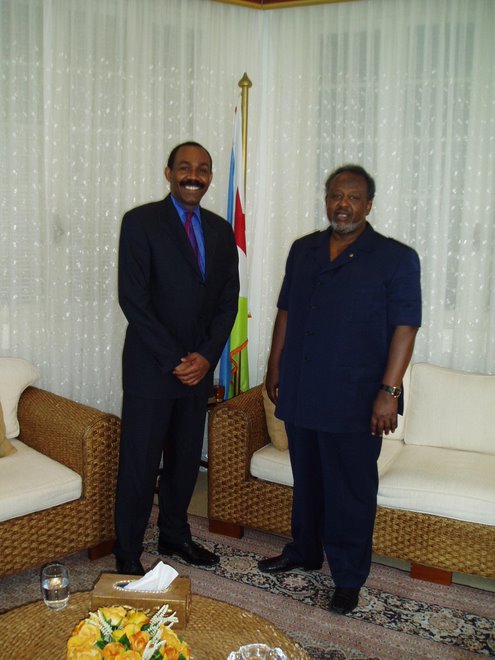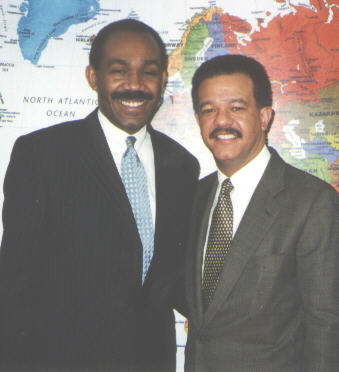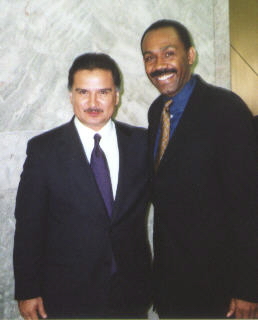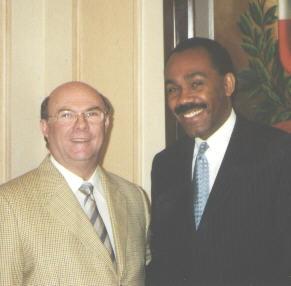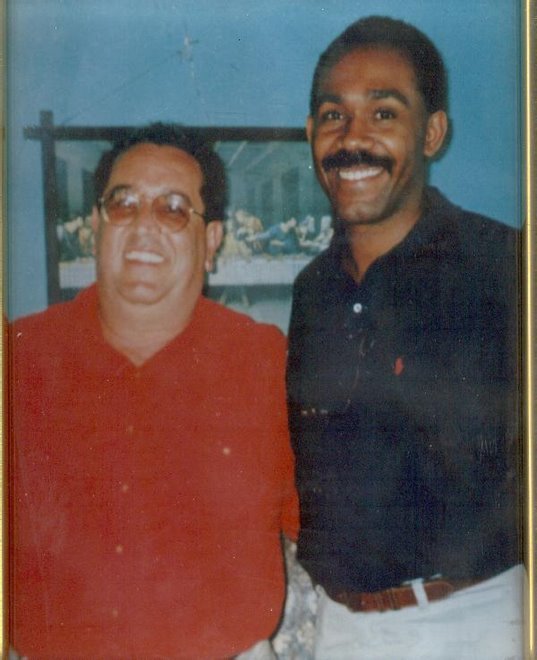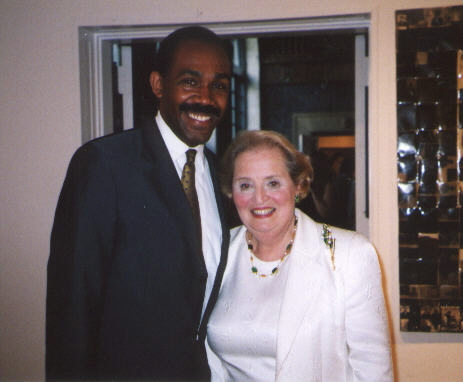EXECUTIVE SUMMARY
Haiti is a constitutional republic with a multiparty political system. There were some allegations of fraud and irregularities in the second round of presidential and legislative elections on March 20, but international observers considered the elections generally free and fair. Voters elected President Michel Martelly, who took office on May 14 but was unable to secure the required parliamentary approval of a prime minister until October 4. Thus day-to-day government operations and budgetary discretion remained in the hands of the outgoing Preval government for six months, during which time there were multiple allegations of human rights abuses, corruption, and embezzlement of public funds. Security forces reported to civilian authorities in principle, but there were instances in which elements of the security forces and some other government officials acted independently of civilian control.
Since 2004 the UN Peacekeeping Force in Haiti (MINUSTAH), made up of approximately 13,000 military and police officers and civilians, has operated in the country with a mandate to assist and advise government and security authorities. Following the January 2010 earthquake, foreign governments, the international community, and many nongovernmental organizations provided assistance in rebuilding the country, while MINUSTAH continued to help maintain security. The earthquake effectively destroyed much of the government’s infrastructure, and approximately 550,000 persons remained homeless and lived in camps for the internally displaced.
The most serious human rights problems included abuses by government security forces and representatives of the judiciary, including extrajudicial killings by police and government officials; allegations of sexual exploitation by members of MINUSTAH; and chronic, severe corruption in all branches of government.
Other human rights problems included torture and excessive use of force against suspects and prisoners; overcrowding and poor sanitation in prisons; prolonged pretrial detention; an inefficient, unreliable, and inconsistent judiciary subject to significant outside and personal influence; rape, other violence, and societal discrimination against women; child abuse; and human trafficking. In addition there were multiple incidents of mob violence and vigilante retribution against both government security forces and ordinary citizens, including setting houses on fire, burning police stations, throwing rocks, beheadings, and lynchings.
Although the government took some steps to prosecute and punish some government officials and Haitian National Police (HNP) members who committed abuses, there was considerable evidence of impunity for some government officials, as well as for high-ranking officers in the HNP. The government successfully tried and convicted eight law enforcement officials for their role in the 2010 killing of inmates in Les Cayes prison.
Section 1. Respect for the Integrity of the Person, Including Freedom from:Share
a. Arbitrary or Unlawful Deprivation of Life
The government or its agents may have committed at least one politically motivated killing, and there were widespread allegations of HNP involvement in extrajudicial killings, some of which led to the arrest, conviction, and sentencing of HNP officers. A December MINUSTAH report detailed allegations of eight killings committed by members of the HNP.
By law authorities are supposed to refer all cases involving allegations of criminal misconduct in the HNP to the Office of the Inspector General (OIG) in the HNP, but the OIG did not pursue most cases.
On March 5, HNP officers allegedly killed Frantz Emmanuel Louis and Sterson Jordanaud Jeune, two of three poster hangers working for the Mirlande Manigat presidential campaign. The officers reportedly arrested the two men in the Champ de Mars camp near the National Palace, took them to the police station, beat them, and then left with them in a police vehicle. Their bodies were found at the national hospital morgue the next day; they had been shot to death. The Port-au-Prince police chief placed seven officers from the riot unit in detention pending an investigation into the matter. Authorities charged five officers, who awaited trial at year’s end.
There were two cases of alleged torture of suspects in police custody that led to deaths. Police in the Port-au-Prince neighborhood of Martissant arrested and allegedly beat Jeffony Michel on April 1, then took him to the emergency room at the National Hospital. Michel was found dead in his cell the following morning. At the hospital morgue, Michel’s cause of death was listed as “shot to death.”
The police chief of the affluent Petionville neighborhood in Port-au-Prince and the Port-au-Prince prosecutor oversaw the arrest, interrogation, torture, and death of Serge Demosthene on June 15. Authorities arrested Petionville Police Chief Vanel LaCroix and seven other officers implicated in the affair. According to an OIG report, Port-au-Prince prosecutor Harrycidas Auguste and LaCroix both admitted being present during the torture and death of Demosthene but blamed each other. Authorities fired Auguste and charged him with murder but later dropped the charges. LaCroix and the other officers awaited trial at year’s end, but Auguste was reportedly being considered for promotion to investigative judge for financial crimes.
The government tried 14 police and corrections officers, as well as 16 escaped prisoners, on charges of murder, arson, escape, and abetting escape resulting from a 2010 riot and successful escape at the Les Cayes prison. The incident left at least 12 inmates dead, while 22 escaped, and many others were wounded. At the trial 15 defendants were present; the rest were tried in absentia, including the former chief of the riot police, Olritch Beaubrun, who remained at large and out of the country. On December 15, the trial concluded, and the prosecution sought life in prison for the 14 officers and an additional one-year sentence for each of the escaped prisoners. After deliberation, the judge found eight police officers and one prisoner guilty and imposed sentences ranging from three to 13 years of hard labor. The prison warden, Sylvester Laraque, was sentenced to seven years’ hard labor less time already served. The judge convicted Beaubrun and the prisoner charged with starting the riot in absentia. Human rights groups and the Office of the Citizen Protector (OPC) applauded the government for providing some measure of justice but said the sentences should have been harsher.
b. Disappearance
There was one report of a politically motivated disappearance by government agents, when one of three poster hangers working for the Mirlande Manigat presidential campaign disappeared. He was never found after an alleged altercation with HNP officers in the Champ de Mars camp near the National Palace, but the bodies of two other poster hangers were found the next day (see section 1.a.).
Current and former HNP officers were accused of participation in kidnappings. In June authorities arrested Emile Augustin, a member of the General Security Unit of the National Palace, on more than 20 charges of kidnapping. Security officials in the Martelly administration had transferred Augustin to the palace in April, following Martelly’s election. Authorities arrested Augustin after determining that he was using a victim’s car to commute to the National Palace.
MINUSTAH reporting through December, based on police station records, showed 159 kidnappings, compared with 121 in all of 2010. It was widely acknowledged among the civilian population, MINUSTAH, and the HNP that a significant number of kidnappings were never reported to the police.
c. Torture and Other Cruel, Inhuman, or Degrading Treatment or Punishment
The law prohibits such practices, but there were some reports of degrading treatment during the year. There were widespread allegations of police mistreatment of suspects during arrest and preliminary detention, as well as credible allegations of police brutality, several of which resulted in the deaths of suspects in police custody. Prisoners were also subject to degrading treatment, in large part due to overcrowded and inhumane facilities. Corrections officers in general did not mistreat prisoners.
There were multiple allegations of sexual abuse and sexual exploitation against members of MINUSTAH. The case of Johnny Jean, an 18-year-old Haitian man, attracted attention when a video showed Uruguayan peacekeepers pulling his shorts down and abusing him on a MINUSTAH base in Port-Salut. The Uruguayan minister of defense issued a public apology, promised perpetrators would be punished to the full extent of the law, and repatriated four soldiers implicated in the affair. The Uruguayan MINUSTAH contingent in Port-Salut was also accused of regularly engaging in transactional sex with local Haitians, usually trading their food rations for sexual favors.
As a mandated UN peacekeeping mission, MINUSTAH has an official “zero tolerance” policy regarding sexual exploitation by members of the mission. It was not clear, however, that the policy had curbed behavior. When the media or legal authorities publicized incidents of alleged sexual exploitation or abuse by peacekeepers, MINUSTAH responded by conducting its own private, internal investigation and took action accordingly. MINUSTAH did not provide case-specific information, but it publishes the number of allegations and substantiations of those allegations yearly. The online database of the UN Conduct and Discipline Unit showed 14 investigations of MINUSTAH sexual exploitation and abuse, of which 12 were categorized as pending and one was considered “substantiated.” A separate database from the Office of Internal Oversight Services showed 13 investigations of sexual exploitation and abuse involving minors.
MINUSTAH’s zero tolerance policy was accompanied by a policy not to discuss the details or status of any specific investigations with outside entities. The UN maintained a “blacklist” of forbidden places for its staff to frequent in Haiti, such as bars or clubs known to support prostitution. Despite the administrative ban, UN vehicles were often seen parked outside and UN personnel were often seen inside these establishments.
Prison and Detention Center Conditions
Prisons and detention centers throughout the country remained overcrowded, poorly maintained, and unsanitary. Overcrowding was severe; in some prisons detainees slept in shifts due to lack of space. Some prisons had no beds for detainees, and some cells had no access to sunlight. Many prison facilities lacked basic services such as toilets, medical services, potable water, electricity, and medical isolation units for contagious patients. Prisoners in Les Cayes frequently defecated into plastic bags. Many prisoners and detainees suffered from a lack of basic hygiene, malnutrition, poor quality health care, and illness caused by lack of access to clean water. Some prisons did not allow prisoners out of their cells for exercise.
The prison system had not recovered from the 2010 earthquake that compromised the holding capacity at facilities in Carrefour, Delmas, Jacmel, and the National Penitentiary in Port-au-Prince. Authorities had recaptured only 1,600 of the more than 5,000 detainees who escaped in the wake of the earthquake, which included all 4,215 persons then held at the National Penitentiary.
According to the Department of Corrections (DAP), there were 7,009 prisoners jailed as of December 21, but the human rights nongovernmental organization (NGO) National Network for the Defense of Human Rights (RNDDH) believed there were as many as 7,192. According to local standards, available prison facilities were at 300 percent of their capacity, but by international standards, the prisons were above 500 percent of capacity.
There were also an estimated 2,000 to 3,000 prisoners held in makeshift and unofficial detention centers in police stations such as Petit-Goave, Mirogoane, Petionville, Gonaives, Port-au-Prince, and other locations. Flooding destroyed regular prison facilities in Gonaives and Petit-Goave; as a result, the Gonaives police station held approximately 250 prisoners and the Petit-Goave police station held 150. Prisoners held in these facilities were under the direct control of the HNP and not the DAP. Local authorities held suspects in makeshift facilities, sometimes for days, weeks, or months, without registering them with the DAP. On some occasions authorities eventually released unregistered suspects on their own recognizance or after they allegedly paid bribes to HNP officers.
In some prisons the incidence of preventable diseases such as HIV/AIDS, malaria, and drug-resistant tuberculosis remained a serious problem. An October 2010 cholera outbreak also affected the prisons, and authorities initially restricted access to prisoners from personal visitors, as well as medical and health NGOs, in an attempt to quell the spread of the disease. The RNDDH reported 275 cases of cholera and 60 deaths among prisoners from January to March alone. Other common diseases in prisons included scabies and beriberi.
Access to adequate nutrition remained a problem. In October 2010 the HNP took on contractual and fiscal responsibility for the delivery of food to prisons after discovering corruption and embezzlement in the DAP. Prison authorities generally provided prisoners with one or two meals a day consisting of broth with flour dumplings and potatoes, rice and beans, or porridge. None of the regular meals served to prisoners provided sufficient calories according to medical standards. As a result, prisoners were allowed regular deliveries of food from relatives, a commonplace practice that resumed during the year after authorities lifted the suspension on outside access imposed after the cholera outbreak.
The HNP also managed other service contracts at prisons, such as sewage treatment. Most prisons had insufficient sewage facilities for their populations. As such, their facilities require more frequent service, but with only one HNP central office to handle all contracts for the police, Coast Guard, firefighters, prison workers, and prisoners, attention to sewage problems often was lacking. Prisons generally used well water as a source for drinking and bathing water. Some prison officials used chlorine to sanitize drinking water, but in general prisoners did not have access to treated drinking water.
Corrections officers were severely underresourced and lacked basic riot control and self-defense capacity. Most prisons employed a single guard in a tower above the facility, armed with a 12-gauge shotgun, a close-range weapon not effective in a prison riot or escape attempt.
Corrections authorities in Port-au-Prince maintained separate penitentiaries for adult men and women. Children 16 and older were often confined with adults. Minors and adults usually occupied the same cells due to lack of available space. When space was available, boys were held in a separate cell of the National Penitentiary in Port-au-Prince. All males under 18 years of age were supposed to be held at the juvenile facility at Delmas 33, but the ages of some detainees could not be verified. Girls were not held separately from women at the Petionville Women’s Penitentiary, but convicts were kept in a separate cell from pretrial detainees. UN prison statistics showed that women accounted for approximately 3 percent of convicted prisoners and 5 percent of pretrial detainees at the end of the year. In areas outside the capital, authorities often did not segregate juveniles from adult prisoners or convicted prisoners from pretrial detainees due to a lack of space, resources, and oversight.
The law permits religious observances in prison, and inmates could request to see a Protestant minister, a Catholic priest, or a Vodou (voodoo) leader. However, in practice most inmates gained access to religious services only once or twice a year. Few if any organized, regular religious services were provided at prisons, but there were occasional visits from members of religious NGOs to prisoners. Prison authorities were very receptive to NGOs providing services to prisoners, particularly at the National Penitentiary in Port-au-Prince. NGOs provided limited medical services, and there was a three-week educational program for juveniles in Delmas.
The OPC was an outspoken advocate for prisoners and better prison conditions but rarely pursued individual complaints. The OPC sponsored several small clinics around the nation to bring judges to prisons to focus on adjudicating pretrial detention cases. These clinics had an immediate effect but resulted only in the release of a few dozen prisoners.
The government, with international assistance, sponsored the construction of new prison facilities throughout the country. A new prison with capacity for 750 inmates was completed in Croix-de-Bouquets but was not yet operational at year’s end. Renovations were under way at the prisons in Cap Haitien, Acahie, Delmas 33 in Port-au-Prince, Petit-Goave, and Fort Liberte.
The DAP permitted the International Committee of the Red Cross (ICRC), MINUSTAH, the RNDDH, the OPC, and other organizations to monitor prison conditions.
d. Arbitrary Arrest or Detention
The law prohibits arbitrary arrest and detention, and the constitution stipulates that a person may be arrested only if apprehended during the commission of a crime or on the basis of a warrant by a legally competent official such as a justice of the peace or magistrate. Authorities must bring the detainee before a judge within 48 hours of arrest. Officials frequently did not comply with these provisions in practice. Citizens also contributed to the disregard of the legal process by bringing alleged suspects by force to local police stations.
On July 24, under the direction of presidential security advisors, the HNP arrested 31 persons following an incident at a rally to welcome President Martelly in Cap Haitien, during which an unidentified individual threw a glass bottle that landed near the president’s feet. Contrary to internal protocol and the law, authorities transferred all 31 detainees to the central investigative police headquarters in Port-au-Prince and held them there without charge for nearly two weeks. After intense pressure from human rights groups, authorities transferred all the detainees back to Cap Haitien and released them.
Role of the Police and Security Apparatus
The HNP is an autonomous civilian institution under the authority of a single director general and includes police, corrections, fire, emergency response, airport security, port security, presidential security, and coast guard functions in separate units. The HNP is a relatively new organization, having been formed after the dissolution of the Haitian military in 1995. During his campaign President Martelly proposed forming a new military, and on December 6, he issued an executive order creating the State Commission of Organization of the Military Component of the Public Force to restore the country’s armed force. The commission will have six months to consult widely among the domestic and international communities to develop a blueprint for a force to serve the public and address the country’s major threats, namely the porous border and environmental disasters.
Officially, the Ministry of Justice and Public Security, through its minister and the secretary of state for public security, provides oversight to the HNP. In practice the minister of justice exerted personal influence on HNP operations and sometimes asked authorities to release suspects, especially during election season. Within the HNP, the OIG is supposed to conduct internal investigations into allegations of police misconduct and recommend administrative action as well as refer cases of criminal police misconduct to the prosecutor. However, OIG cases were not effectively transferred or pursued by the prosecutor.
Despite there being more than 100 OIG employees, only one inspector was assigned to the investigative bureau. In September he was transferred to the Director General’s Office and not replaced. The inspector general, Fritz Jean, resigned in September after the acting justice minister and outgoing prime minister Jean-Max Bellerive allegedly pressured him to reintegrate former members of the HNP who were serving in President Martelly’s security entourage. Inspector General Jean had also just completed an investigation into the involvement of former Petionville police commissioner Vanel LaCroix and former Port-au-Prince prosecutor Harrycidas Auguste in the killing of a witness in police custody (see section 1.a.).
Women make up less than 8 percent of the total police force, despite recruiting drives for female officers. The HNP claimed it formed a specialized Sexual and Gender-Based Violence (SGBV) unit, but the highest-ranking female officer assigned command the SGBV unit explained she had no vehicle, no cell phone, no subordinates, and no resources.
The vetting process of current and new officers in the HNP stalled during the year. A joint process between the HNP and UN Police Officers (UNPOL) has been in place for several years, but they did not apply the process uniformly. HNP leadership fired some officers as a result of the vetting process, but not all names discovered in the vetting process received the same treatment. There is no permanent internal HNP administrative body to take action when officers fail to meet vetting standards. According to the RNDDH, the number of HNP officers identified as not meeting vetting requirements was in the hundreds.
The specific limits of the MINUSTAH mandate kept military and law enforcement authorities from conducting unilateral operations. Frequently there was poor or no coordination between MINUSTAH and Haitian law enforcement. MINUSTAH units were assigned to patrol camps for internally displaced persons in particular, but without unilateral arrest authority, they were generally unable to intervene during instances of violence. MINUSTAH leadership acknowledged that most of their troops did not speak French or Creole and had extremely limited access to translation services, which further hampered their ability to coordinate with their HNP counterparts.
Reform and professionalization of the HNP continued as international programs and foreign governments provided human rights and other training and equipment for new recruits and existing officers; police station upgrades; security and humanitarian improvements to prisons; vehicles, computers, and communications equipment; and other technical assistance.
Arrest Procedures and Treatment While in Detention
The law permits police officers to make arrests when a suspect is caught during the commission of a crime, or later with a court-authorized warrant. Police frequently apprehended persons without warrants or with warrants not issued by a duly authorized official. Authorities frequently detained individuals on unspecified charges or pending investigation. Persons arrested reported credible instances of extortion, false charges, illegal detention, physical violence, and refusal to grant due process by agents of law enforcement and the judiciary. The government frequently did not observe the constitutional requirement to present detainees before a judge within 48 hours, and prolonged pretrial detention remained a serious problem. Authorities held many detainees in pretrial detention for extended periods--in some cases up to five years--without the opportunity to appear before a judge.
Detainees generally were allowed access to family members and a lawyer of their own choosing. Many detainees could not afford the services of an attorney. The local bar association in some departments formed legal assistance groups to provide pro bono counsel to indigents who could not afford an attorney, but there was no nationwide government provision of free legal representation.
Some citizens--convicted criminals returned by foreign countries--initially alleged corruption, arbitrary arrest, false accusations about their activities to local police, and extortion attempts against them and their families abroad during the initial detention phase in exchange for quicker release from administrative quarantine. These accusations declined steeply during the year, although deportees still complained about access to medicine and continuing illegal detention of a small number considered to be “security risks” by the government.
Pretrial Detention: Prison population statistics did not include the large number of persons held in police stations around the country in prolonged pretrial detention (without a hearing or filed charges) for longer than the 48-hour maximum detention period. Inadequate recordkeeping and data entry at police stations made it difficult to confirm the number of persons held in prolonged detention, although reliable estimates ranged between 2,000 and 3,000.
The overwhelming majority of the prison population were in lengthy pretrial detention, having never seen a judge or had access to legal counsel, much less being given a timeline for their case. As of December, of the 7,009 persons in custody, authorities had tried and sentenced 2,201, while 4,808 awaited trial. Approximately one-third of those awaiting trial had been incarcerated for a year or longer.
e. Denial of Fair Public Trial
Although the law provides for an independent judiciary, in practice the executive and legislative branches exerted significant influence on the judicial branch. Judges assigned to politically sensitive cases complained about interference from the executive branch. Credible reports of judicial corruption were commonplace.
Pervasive and long-standing problems, primarily stemming from a lack of judicial oversight and professionalism, contributed to a large backlog of criminal cases. In addition the justice system sustained significant losses in the 2010 earthquake, including large portions of case files including evidence and testimony for pending cases. Because most of the 4,808 pretrial detainees had never been before a judge, seen a lawyer, or even had access to documentation regarding the charges against them, they were effectively denied the right to trial.
The code of criminal procedure does not assign clear responsibility for criminal investigations and divides authority among police, justices of the peace, prosecutors, and investigative magistrates. Authorities often failed to question witnesses or complete investigations and rarely conducted autopsies. Examining magistrates often received incomplete files. The law allows for a two-month delay for magistrates to request additional information from investigators. By law the delay is not supposed to be invoked more than twice, but magistrates often did not follow the law, and investigators often dropped cases or did not return them within the two-month limit.
Corruption and a lack of judicial oversight also severely hampered the functioning of the justice system. Many judicial officials charged varying “fees” to initiate criminal prosecutions based on their perceptions of what a service should cost, and those who could not afford to pay often did not receive any services from prosecutorial or judicial authorities. There were widespread, credible allegations of unqualified and unprofessional judges who received appointments as political favors. Many judicial officials also held full-time civilian jobs, and there was no law to prevent a conflict of interest.
Trial Procedures
The judicial apparatus follows a civil law system based on the Napoleonic Code, largely unchanged since 1880. In practice authorities widely ignored the constitutionally provided right to a fair public trial. The constitution also expressly denies police and judicial authorities the right to interrogate suspects unless legal counsel or a representative of the suspect’s choice is present or the suspect waives this right. Most accused persons could not afford legal counsel for interrogation or trial, and the law does not require that the government provide legal representation. However, some defendants had access to counsel during trials, and some international groups provided legal representation to defendants who could not afford it. The government hired defense counsel for a very small number of defendants, usually for government employees facing charges related to their official duties, such as police officers.
While the constitution provides defendants with a presumption of innocence, the right to be present at trial, the right to confront witnesses against them, and the right to present witnesses and evidence on their own behalf, judges frequently denied defendants these rights. The lack of a witness protection program and widespread impunity discouraged some witnesses from testifying at trials. Defendants and their attorneys had access to government-held evidence before trial, but most evidence in trials was from witness testimony. Defendants had the right to appeal.
There were 403 criminal trials, which resulted in 400 convictions and 162 acquittals, during the 2010-11 judicial year. Courts in Port-au-Prince processed 123 of the acquittals, 101 of them under the 10-week supervision of prosecutor Sonel Jean Francois, who was fired for separate reasons (see section 4).
The functioning of civil courts (Tribunal de Paix), the lowest courts in the judicial system, was inconsistent at best. There were at least 194 civil courts, the vast majority of which were in crumbling facilities, most of which did not have toilets, desks, or office equipment. Several tribunals were located in private homes, while some were co-located with other facilities. The RNDDH highlighted two examples of significant problems with civil courts in l’Estere and Desdunes, which were the sites of repeated riots and violent demonstrations by citizens who believed they had no legal, peaceful means to communicate the lack of resources provided by the state, such as electricity.
Judges provided hours of operation based on their personal availability and often maintained separate, full-time jobs. A police officer was rarely present during trials, and frequently there was no court reporter. Judges often chose to hear or not hear cases based on bribes provided to them. By law a High Council of Judicial Power (CSPJ) should oversee judges and the judiciary, but this institution had yet to function by year’s end. In October President Martelly appointed a president of the Supreme Court, a fundamental balancing power in the government that had been absent since 2004, and that person will head the CSPJ.
In multiple locales, elected communal administrators called CASECs took the place of civil judges and asserted self-appointed powers of arrest, detention, and issuance of legal judgments. Some CASECs turned their offices into courtrooms.
In Gros Morne, Artibonite Department, the two judges refused to hear any cases during the year because of a personal dispute. In Chansolme and Bassin Bleu, Northeast Department, the CASECs acted as police and judges, arresting and judging citizens themselves. In Jeremie citizens refused to allow the newly appointed judge, who previously was the prosecutor there, to hold court, insisting he was unqualified. No hearings were held in Jeremie during the summer.
The civil court in Port-au-Prince falsified court documents to free four men accused of armed robbery, kidnapping, and extortion. Judge Rodriguez Pierre Louis, court clerk Mode Cazimir Cantave, and investigator Emmanuel LaCroix released one of the men the same day. The three men repeated the same procedure to clear former Port-au-Prince prosecutor Harrycidas Auguste of charges of illegal detention, torture, and murder of a witness in police custody (see section 1.a.).
Political Prisoners and Detainees
There were no reports of political prisoners or detainees.
Civil Judicial Procedures and Remedies
Victims of alleged human rights abuses are legally able to bring their cases before a judge for cessation of the violation. Damages can be awarded if the claim is brought as a civil suit and the judge convicts the perpetrator. Seeking legal remedies for human rights abuses was difficult and rarely successful, especially in view of the disarray of the civil court system.
f. Arbitrary Interference with Privacy, Family, Home, or Correspondence
The law prohibits such actions, and the government generally respected these prohibitions in practice.
Section 2. Respect for Civil Liberties, Including:
a. Freedom of Speech and Press
Status of Freedom of Speech and Press
The law provides for freedom of speech and press, and the government and elected officials generally respected these rights in practice. The independent media were active and expressed a wide variety of views without restriction. However, there were a few incidents of local government officers and elected officials harassing or threatening journalists.
Freedom of Press: Journalists and journalism NGOs criticized President Martelly for his derogatory, aggressive, and intimidating language towards domestic journalists and of being selective in his choice of reporters to whom he gave interviews. The president and members of his government were often quoted using vulgar language in response to some questioning from reporters. The president accused journalists of lacking professional objectivity and working for political opponents. However, there were no substantiated claims of any action by or from members of President Martelly’s administration to limit the freedom of the press.
Violence and Harassment: On April 26, alleged supporters of the INITE party attacked and burned the community radio station Tet Ansanm Karis in the border town of Clarice. The attack came during a rash of election-related violence after international organizations questioned the overturning of legislative election results in favor of the INITE party.
In September some civilian supporters of former president Jean-Claude “Baby Doc” Duvalier physically disrupted an Amnesty International press conference regarding the release of a report detailing crimes allegedly committed by Duvalier during his 1971-86 rule. The men grabbed microphones and cameras and eventually forced the Amnesty International representatives, as well as Haitian witnesses prepared to give testimony against Duvalier, to leave. Two lawyers for Duvalier, Reynold Georges and Osner Fevry, took over the stage and held their own impromptu press conference, decrying the charges as false and defending their client.
Unknown assailants killed several journalists in past years. In particular, the April 2000 killing of Jean Dominique remained unsolved.
Censorship or Content Restrictions: There were no government restrictions on freedom of the press or media content, but some journalists practiced self-censorship on stories related to drug trafficking or allegations of business and political corruption, likely due to past patterns of retribution against investigative reporting, which risked reporters’ livelihood and possibly their physical security.
Internet Freedom
There were no government restrictions on access to the Internet or credible reports that the government monitored e-mail or Internet chat rooms. Individuals and groups could engage in the expression of views via the Internet, including by e-mail. Lack of infrastructure limited public access to the Internet.
Academic Freedom and Cultural Events
There were no government restrictions on academic freedom or cultural events.
b. Freedom of Peaceful Assembly and Association
The law provides for freedom of assembly and association. Citizens must apply for a permit to hold legal demonstrations.
A small minority of civil groups applied for and received permits to conduct peaceful demonstrations. More frequently, however, student and civil action groups held impromptu demonstrations in front of key government facilities or major public thoroughfares. These groups often erected barricades, sometimes with burning tires and debris, and occasionally threw rocks and bottles at passing motorists and at government, HNP, and UN vehicles. Some student groups and political groups openly threw rocks and bottles at HNP and UN security staff. During election season demonstrators often targeted UN vehicles that they perceived as affiliated with election problems. Government security forces frequently used tear gas to disperse crowds and sometimes used batons to subdue or chase away demonstrators. In the spring and summer, demonstrators often blocked national highways with broken-down trucks and debris to protest a lack of government services in the area, particularly a lack of electricity.
c. Freedom of Religion
See the Department of State’s International Religious Freedom Report at www.state.gov/j/drl/irf/rpt.
d. Freedom of Movement, Internally Displaced Persons, Protection of Refugees, and Stateless Persons
The law provides for freedom of movement within the country, foreign travel, emigration, and repatriation, and the government generally respected these rights in practice. Persons deported from other countries were sometimes subjected to amendments in their Haitian passports by the Immigration Office, denoting the infraction for which they were deported.
Internally Displaced Persons (IDPs)
The presence of IDP camps in the country remained widespread, with a large concentration of the estimated 800 camps located in the greater Port-au-Prince metropolitan area. The most recent estimates placed the number of IDPs living in camps at approximately 550,000, although there were indicators that up to 30 percent of shelters were vacant, raising the possibility that the actual number of IDPs was much lower. Many former camp residents moved in with relatives, found new housing, or moved back into repaired or partially damaged homes. The Martelly administration began an IDP resettlement program targeting six major IDP camps in Port-au-Prince and provided land and financial incentives to move. Several highly visible camps on public land in Port-au-Prince were completely emptied by the end of the year, through a combination of municipal government and NGO programs.
A substantial portion of the remaining camp population had no viable means of earning income or paying for rented housing. The vast majority of IDPs also did not own property prior to the earthquake. While some of the larger IDP camps had support from NGOs, the UN, and domestic law enforcement, the vast majority were unregulated camps with extremely limited access to clean water and sanitation.
Even in camps with a law enforcement presence, residents reported little in the way of effective protection from urban crime. The Jean Marie Vincent camp housed approximately 40,000 inhabitants in 1.4 square miles of land near the airport on the edge of Cite Soleil, a notorious slum. MINUSTAH, which formed an IDP unit staffed by 400 UNPOL officers working in loose coordination with the HNP, had a 37-person unit dedicated to the camp. MINUSTAH and UNPOL members did not have arrest authority and typically functioned as a deterrent force, rather than enforcing the law or intervening. The agreement with MINUSTAH requires an HNP officer to be present for any law enforcement operation. In contrast to the 37 UNPOL officers assigned to the camp, the HNP assigned just 10 officers who worked in three-person shifts, meaning officers never had a scheduled day off.
Some citizens blamed residents of IDP camps for perceived increases in criminal activity in neighborhoods with IDP camps. The students at the State University of Haiti protested and publicly blamed residents of the Champ de Mars IDP camp, located near their campus, for a spate of crimes targeting students.
Residents of Jean Marie Vincent camp reported a poor relationship between UNPOL, HNP, and camp residents. Counselors in the camp regularly reported incidents of rape in the camp, but there was little or no follow-up from law enforcement authorities. Camp residents also reported that most police patrols, both UNPOL and HNP, were around the perimeter of the camp and typically did not include patrols after dark. Gang recruitment and initiation also remained a major problem in the camp because there were up to 6,000 school-age children living in the camp with little or no educational, vocational, or employment opportunities.
There were reports of sexual and gender-based violence in the IDP camps including rape, domestic violence, and transactional sex, a situation further exacerbated by limited access to medical, legal, or economic support services.
Some IDPs who received money, services, or a combination of both as incentives to move out of camps did so successfully, although others chose to vacate camps after receiving compensation but moved to different unregulated camps. The rural terrain known as Canaan, located outside the Port-au-Prince suburb of Croix-des-Bouquets, continued to grow beyond an estimated 70,000 residents. There was limited NGO, UN, and law enforcement presence in the original planned portion of Canaan, called Corail Camp, but those services supported only approximately 6,500 people. Many IDP camp managers and service providers reported that NGO presence was waning during the year, with many groups citing a declining level of donations forcing them to cut back on services.
IDP camp residents reported numerous forced evictions with no legal documentation and little or no notice. UN representatives and NGOs reported that specialized units in the HNP, in particular riot police, often accompanied landowners conducting forced evictions and used brute force tactics to force residents to leave. Many landowners and local authorities viewed the IDPs as illegal squatters seeking to manipulate the camps to gain humanitarian assistance.
The government coordinated marginally or not at all with foreign government agencies, international organizations, the UN, and NGOs to provide services in IDP camps. There were accusations that government officials or representatives from government offices required rent payment from some IDP camp dwellers. The Ministry of Public Works’ program to identify uninhabitable, repairable, and habitable houses was largely ineffective, as the government did not assign resources to rebuild or repair houses, and citizens did not trust the government’s assessment of their residences. The endemic lack of land registry, as well as nonstandard land registry, further complicated IDP resettlement.
Protection of Refugees
Access to Asylum: The law provides for the granting of refugee status or asylum through the Ministry of Foreign Affairs in missions or consulates abroad. In practice, however, the government did not routinely grant refugee status or asylum.
Stateless Persons
The country’s dysfunctional civil registry system and weak consular capacity throughout the Caribbean made obtaining documentation extremely difficult for individuals living inside or outside the country, increasing the risk of statelessness for Haitians and people of Haitian descent throughout the region. There were no reliable estimates, however, on the number of such persons at risk of statelessness.
The two groups at greatest risk of statelessness were undocumented Haitian migrants who were unable to access documentation abroad and descendents of Haitian migrants abroad who acquired citizenship by birth on the territory but were at risk of having it revoked. (The constitution prohibits dual citizenship, calling for the automatic revocation of Haitian citizenship upon acquiring citizenship from another country.) In the case of the neighboring Dominican Republic, the retroactive application of new nationality laws allegedly stripped persons of Haitian descent of their Dominican nationality, dramatically increasing their risk of statelessness.
The Dominican Republic government deported thousands of these people back to Haiti, many of whom were from families living in the Dominican Republic for generations, had never been to Haiti, and did not speak Creole or French. According to NGOs providing emergency relief, the government had no capacity to accept or support these deportees. The National Office of Migration under the Ministry of Social Affairs has responsibility for deportees but did not provide personnel, facilities, or services to deportees. NGOs that provide emergency services to deportees along the border had the capacity to house only a few hundred people at a time and at most provide them with money for transportation to their extended families’ residences.
Section 3. Respect for Political Rights: The Right of Citizens to Change Their GovernmentShare
The law provides citizens the right to change their government peacefully, and citizens exercised this right in practice through periodic, free, and fair elections based on universal suffrage.
Elections and Political Participation
Recent Elections: There were isolated incidents of fraud, flawed voter registration lists, ballot stuffing, intimidation, and some violence at the polls during the March 20 second round of elections for deputies, senators, and president. Despite incidents of civil unrest, the police remained largely neutral during the political process. The first round of elections in November 2010 was also marred by fraud, flawed voter registration lists, ballot stuffing, intimidation, and some violence at the polls. Despite a relatively low (22 percent) participation rate, international observers and civil society generally considered the second round to be free and fair. Voters elected Michel Martelly by a wide margin, and he was peacefully inaugurated as president on May 14, all the more remarkable since the outgoing and incoming presidents were from opposing political parties.
Political Parties: There were some restrictions on certain political parties. In 2009 the Provisional Electoral Council (CEP) considered 69 political parties for the 2010 parliamentary elections and approved 53. The CEP rejected 16 parties, including former president Jean-Bertrand Aristide’s party, Fanmi Lavalas, for documentation that was inconsistent, lacked notarization, or did not conform to legal requirements. Other rejected major parties included Union, Popular Solidarity Alliance, Struggling People’s Organization, and Fusion. The latter two groups allied under a new party banner, Alternative, which officially boycotted the elections, although many of the party’s legislative candidates participated in the elections.
The constitution requires that, following local and municipal elections, local officials must hold a series of indirect elections to staff departmental organs of self-government and an interdepartmental council to advise the national government and nominate candidates for the CEP. The law requires that the three branches of the national government select from among these nominees the council’s nine members. Since these indirect elections have not taken place since the constitution was written, the country continued to operate with the presidentially appointed CEP.
Participation of Women and Minorities: Electoral legislation mandates that political parties nominating at least 30 percent female candidates and electing 20 percent of those nominated receive twice as much public financing for those same positions in the next election. None of the political parties met these criteria in the November or March elections. The monetary deposit required of female candidates for political office (if sponsored by a recognized party) was one-half that required of male candidates. In the 2010 elections, two women ran as candidates for president, eight for the Senate, and 45 for deputy seats. Of the deputy candidates, two won their seats outright in the first round, and seven qualified to run in the second round. Mirlande Manigat, one of the female presidential candidates, won approximately 30 percent of the vote, qualifying her to run in the second round.
Voters elected five women to the 99-member Chamber of Deputies. The sole female member of 30 senators was elected in 2006, and her term expired during the year. President Martelly appointed three women into ministerial positions (women’s affairs, tourism, and health), of which there were 16, and four female secretaries of state out of 19. Martelly also appointed women to be director general and vice director general of the Haitian Popular Bank, one of two state-owned banks.
Section 4. Official Corruption and Government Transparency
The law provides criminal penalties for official corruption. However, the government did not implement the law effectively, and officials often engaged in corrupt practices with impunity. Corruption remained widespread in all branches and at all levels of government. The constitution mandates that high-level officials and parliament members accused of official corruption be prosecuted before the Senate, not within the judicial system. However, the Senate brought no such prosecutions.
In July the RNDDH published a list of names of 22 candidates in the 2010 parliamentary elections, all of whom received a salary of 100,000 gourdes (approximately $2,500) a month during their campaigns from the Ministry of Interior. All 22 candidates were from different parties but ran under the INITE banner, the political party of the Preval government. Voters elected 12 of these candidates. After publication of the list, the anticorruption committee in Parliament convoked the acting minister of interior, Paul Bien-Aime, who publicly testified that the payments were for consulting services and asserted that there was nothing illegal about hiring consultants during election season. Earlier in the year Port-au-Prince prosecutor Sonel Jean Francois attempted to pursue the case, but he was fired after Amos DuRosier, director of the government’s Unit to Fight Against Corruption (ULCC), alerted Bien-Aime and Prime Minister Jean-Max Bellerive to the investigation. Afterwards, authorities made no arrests nor levied any fines. Two anticorruption bodies in the government, the ULCC and the Central Unit of Financial Intelligence (UCREF), refused to pursue the case, alleging that investigating a sitting minister was outside their mandate and up to Parliament to resolve.
On January 16, former president Jean-Claude Duvalier returned to the country. Authorities immediately arraigned Duvalier on charges that included corruption, torture, and murder. A substantial number of plaintiffs filed cases against Duvalier, supported by local and international NGOs and the UN. The cases were handed over to three subsequent Port-au-Prince prosecutors. At year’s end the judge assigned in the case had yet to decide whether there was sufficient evidence to proceed to trial.
Former president Jean Bertrand Aristide returned to the country on March 18. At year’s end no charges had been filed against Aristide.
During the period from President Martelly’s election in May to the installation of a prime minister in October, there were multiple allegations of corruption and embezzlement by members of the outgoing Preval government. The RNDDH alleged in September that Prime Minister Jean-Max Bellerive had transferred approximately 3.5 million gourdes ($87,500) in government funds to a man named Marinio Jeune in the city of Les Cayes.
On May 30, authorities arrested Edrick Leandre, head of the mandatory car insurance agency. Although the HNP carried out the arrest, its impetus reportedly came from the new Martelly administration. Both the government’s main audit agency and the ULCC issued damaging reports against Leandre and his administration of the multimillion dollar agency. The head of its employees’ union hailed the move as a warning to other alleged wrongdoers and lamented that Preval had shielded Leandre from legal action.
There were frequent reports of corruption in the HNP. For instance, affluent prisoners at times obtained favorable conditions of detention. The HNP investigated some allegations of police malfeasance, leading to the arrest or termination of employment of very few officers.
There were reports of corruption and impunity in the electoral process. In October the media reported that an elected deputy in Port-au-Prince, Arnel Belizaire, was an escaped prisoner convicted of murder in 2004. The law provides immunity from prosecution for sitting legislators, but attorneys and human rights advocates asserted that immunity did not apply to previous convictions. Human rights NGOs alleged that Belizaire paid bribes to the CEP to overlook his conviction when he declared his candidacy. On October 27, authorities arrested Belizaire, and former prosecutor Felix Leger requested that the Chamber of Deputies lift his immunity. The chamber did not do so, and both chambers of parliament debated the legality of the arrest and summoned the minister of justice, Leger, and others. On November 28, the Senate heard a report placing responsibility for the arrest on Justice Minister Pierre-Louis. Both he and Leger resigned, and the Senate took no further action. The Chamber of Deputies was expected to take up the issue when it opened its regular session in January 2012.
The UCREF has responsibility for combating financial crimes. By law the president, the prime minister, cabinet ministers, other high-level public officials, and members of the HNP must declare assets. By the end of the year, only the former president and prime minister had complied with the law, according to press reports. Public officials who do not fulfill this obligation are subject first to a 50 percent reduction in salary, followed by suspension, until they file their statements. However, by the end of the year the government sanctioned no officials for failure to file the disclosures. No law requires public access to government information.
Section 5. Governmental Attitude Regarding International and Nongovernmental Investigation of Alleged Violations of Human RightsShare
A number of domestic and international human rights groups generally operated without government restriction, investigating and publishing their findings on human rights cases. The government cooperated with the various human rights observation missions and generally acknowledged their views but disagreed on the most appropriate approach to addressing human rights issues.
UN and Other International Bodies: The government permitted special missions and the continued presence of UN bodies and other international organizations such as the ICRC.
Government Human Rights Bodies: The constitution provides a seven-year mandate to the OPC to protect individuals against any form of abuse by the government. In principle the OPC offered free legal assistance to any citizen who appeared before a court regarding a filed complaint, but in practice the organization lacked the funding, personnel, and capacity to provide these services to all those who sought them. The OPC took an active role in investigating allegations of government abuse and worked collaboratively with international organizations. In particular the OPC advocated strongly for the rights and better conditions of prisoners, especially juvenile prisoners in preventive detention. The OPC regularly visited prisons and detention facilities. The OPC also worked closely with NGOs and civil society groups representing and providing services to victims of gender-based violence.
The Chamber of Deputies and the Senate each had a human rights committee; however, neither committee published any reports or introduced any legislation during the year.
Section 6. Discrimination, Societal Abuses, and Trafficking in PersonsShare
The law does not specifically prohibit discrimination on the grounds of race, gender, disability, language, or social status. It does provide for equal working conditions regardless of gender, beliefs, or marital status. However, no effective governmental mechanism administered or enforced these provisions.
Women
Rape and Domestic Violence: The law prohibits rape but does not recognize spousal rape as a crime. The penalty for rape is a minimum of 10 years of forced labor, increasing to a mandatory 15 years if the victim was less than 16 years old. In the case of gang rape, the maximum penalty is lifelong forced labor. Actual sentences were often less rigorous, and prosecution frequently was not pursued due to lack of reporting and follow-up on victims’ claims. Of the 54 men convicted for rape in 2010-11, judges handed down sentences ranging from eight months to 15 years; one man--a priest--received life in prison. The criminal code excuses a husband who kills his wife or her partner found engaging in an act of adultery in his home, but a wife who kills her husband under similar circumstances is subject to prosecution.
In December MINUSTAH reporting from police station registers showed 470 allegations of rape, a drop of nearly 50 percent from 2010 that likely did not reflect a reduction in the incidence of rape, but rather a decline in the confidence of victims that their cases would be investigated if reported. Some NGOs reported a marked increase in the incidence of rape. UN reporting showed near daily incidents of domestic violence and rape. The HNP SGBV unit had few resources and no rape kits.
Rape and other forms of violence were a particular problem in the IDP camps, as they were in urban slums throughout the country. A host of factors in IDP camps contributed to the increased vulnerability of women and minors: flimsy tent doors, poor lighting, separated families, unfamiliar neighbors, the relative anonymity that hundreds of tents provide, the lack of effective law enforcement, and limited knowledge of and access to health and economic services. Teenage girls often had their own tents, perhaps reflecting family efforts to spread out among several tents in order to maximize the amount of goods and services they received from NGOs. An unfortunate side effect was that many young women and girls were placed in vulnerable situations.
Attorneys from the Bureau des Avocats Internationaux (BAI), who represent rape victims, said that authorities were fairly responsive to cases involving the rape of minors, as the law is clear and judicial measures already exist to deal with such cases, which are often accompanied by outrage from local communities. However, cases in which the offender was also a minor or in which the victim was an adult were often dropped or not effectively pursued, they said, because there were no clear legal or administrative structures to deal with such cases. They said authorities often “provisionally released” juvenile offenders in rape cases back to their parents.
According to BAI, in 63 of the 73 cases of rape received during the year, the victims were minors. BAI attorneys said barriers to reporting rape remained high and included stigmatization, fear of reprisal, and distrust of the judiciary and legal system. They also said there were wide disparities in access to and the quality of medical certificates from hospitals treating rape survivors. Multiple credible groups said that legal authorities often asked rape victims inappropriate questions, such as whether the victim was a virgin before the incident and what clothing the victim was wearing at the time of the alleged rape, a practice corroborated by the RNDDH. In some cases authorities advised victims against pressing charges in order to avoid the public humiliation of a trial. Having limited access to protection and shelters, survivors of rape and other forms of sexual violence faced obstacles in pursuing legal justice.
The law does not classify domestic violence against adults as a distinct crime. Women’s rights groups and human rights organizations reported that domestic violence against women remained commonplace and underreported. Police rarely arrested the perpetrators or investigated the incidents, and the victims sometimes suffered further harassment and reprisals from perpetrators, sometimes prompting secondary displacement of victims within IDP camps. Judges often released suspects arrested for domestic violence and rape.
Sexual Harassment: The law does not specifically prohibit sexual harassment, although the labor code states that men and women have the same rights and obligations. Data concerning sexual harassment in the workplace were not available, although observers suggested that sexual harassment was common. Such incidents went unreported because of high unemployment and because citizens had little confidence in the ability of the judicial system to protect them.
Reproductive Rights: Couples and individuals have the legal right to decide the number, spacing, and timing of children and have the information and means to do so free from discrimination. Despite high levels of general knowledge of contraceptive methods, social, cultural, and legal barriers often impeded women from acquiring additional information on family planning methods and reproductive health care. In the largely conservative society, modern contraception is discouraged, and most men do not desire it. The most popular form of modern birth control was injection, because women did not have to declare it to their partners. A 2006 UN report showed a 37.5 percent unmet need for family planning, a trend that health-care professionals said persisted. Young sexually active women found it especially difficult to gain access to family planning services. Family planning services were often located in public health facilities such as hospitals but did not have private or confidential screening areas.
The UN Population Fund reported that only 25 percent of all deliveries occurred in health institutions. A 2006 Ministry of Health study showed that up to 85 percent of pregnant women reported at least one antenatal medical visit and 54 percent reported four or more antenatal visits. Most women used “matrons,” often experienced but untrained local women, to help them give birth at home or in nonmedical facilities. Health-care professionals attributed this practice to the poor level and inconsistency of maternal services at hospitals and clinics. Pregnant women often went for an initial visit and discovered overcrowded facilities with untrained staff and insufficient medical supplies. While most women in rural provinces chose to deliver at home, many women in urban areas with access to professional delivery services also chose to deliver at home. A rough estimate based on UN, World Bank, and local health professional estimates of health trends placed the maternal mortality rate between 300 and 670 per 100,000 live births, although this number could not be confirmed since no nationwide survey has been conducted since 2005. A combination of strict laws, unmet family planning needs, a high fertility rate, and a high level of unwanted pregnancies contributed to the high maternal mortality rate.
Women and men had equal access to diagnostic services and treatment for sexually transmitted infections, including HIV/AIDS.
Discrimination: Women did not enjoy the same social and economic status as men. In some social strata, tradition limited women’s roles. The majority of women in rural areas remained in the traditional occupations of farming, marketing, and domestic labor. Very poor female heads of household in urban areas also often faced limited employment opportunities, working in domestic labor and sales. Government and private sector employers seldom promoted women to supervisory positions.
Children
Birth Registration: Citizenship is derived through an individual’s parents; only one parent of either sex is necessary to transmit citizenship. Citizenship can also be acquired through a formal request to the Ministry of the Interior. The government did not register all births immediately and did not keep statistics concerning the number of unregistered births each year. One government report estimated births of more than 10 percent of Haitians were not registered. Birth registry is free until the age of two, after which it can be difficult and expensive to get a birth certificate, particularly in the provinces. Another deterrent to birth registration is that the certificate states that the child is legitimate if born in wedlock, and “natural” if not, which can deter people from registering births to avoid stigmatizing the child.
Birth documents are legally necessary to open a bank account, apply for credit, gain admission to a hospital, and vote. Individuals without required birth documents were not denied emergency medical services or educational opportunities on that basis. Many official documents were destroyed in the earthquake. The National Archives saw its requests for certified copies of documents more than triple upon reopening after the earthquake, and the Office of National Identification faced long lines for months as people sought to replace lost or damaged identification cards. Both institutions were overwhelmed by the demand but addressed the backlog incrementally.
Education: Despite constitutional provisions proclaiming free and compulsory primary education for all children, neither primary nor secondary education was compulsory, free, and universal. There were approximately 1.5 million children between the ages of six and 12 in the country, only half of whom attended school. On October 3, President Martelly announced a plan to give access to free education to approximately 772,000 children in public schools throughout the country for the 2011-12 school year, through a combination of waiving school fees for an estimated 500,000 existing students and providing tuition for 250,000 new students. The UN Children’s Fund and other international bodies also contributed millions of dollars to subsidize the cost of schooling. Many families who were not able to get their children into a public school paid for their children to attend private schools, which were generally unaccredited and unregulated.
Child Abuse: The law prohibits domestic violence against minors. MINUSTAH reporting from police stations registered only 77 incidents of domestic violence against minors during the year compared with 300 incidents from January to October 2010. The lowered rate likely did not reflect a decrease in activity, but a decrease in reporting similar to that seen in rape cases. Governmental agencies and programs promoted children’s rights and welfare, but the government lacked sufficient resources to support or enforce existing mechanisms adequately.
Credible sources reported that between 250,000 and 500,000 children worked as indentured household servants, or “restaveks” (see section 7.c.). Approximately 65 percent of these children were female, and nearly three-quarters of them worked as servants in the homes of relatives or family acquaintances.
Port-au-Prince’s population of several thousand street children included many who were dismissed from or fled employers’ homes or abusive families, but also some children who lost parents or caretakers in the earthquake. Almost 75 percent of street children were boys, according to estimates. NGOs reported that street children were likely to be sexually or otherwise abused, received little or no education, and were easily exploited by trafficking recruiters. Criminal gangs also reportedly enlisted minors to commit illegal acts. The Ministry of Social Affairs provided some assistance, such as food and temporary shelter, to street children.
The Institute of Social Welfare and Research (IBESR) is responsible for monitoring and accrediting more than 600 residential care centers but had limited resources with which to do so. Lack of sanitation, overcrowding, insufficient food, an absence of education, and poor adult supervision characterized many of these facilities. Allegations of sexual abuse by staff were not uncommon. Nearly all children’s homes in the country were operating at or above capacity, according to the IBESR. There was extensive evidence that foreign adoption agencies and their clients helped informally fund some residential care centers that did not meet government standards for care of children for adoption.
Sexual Exploitation of Children: The minimum age for consensual sex is 18. Inefficiencies in reporting and investigating allegations of rape contributed to uncertainties regarding penalties, if any, for statutory rape. Children also worked on the street and in IDP camps in prostitution. The UN reported that children were the victims in 60 percent of sexual gender-based violence cases reported in 2010. Recruitment of children for sexual exploitation, pornography, and illicit activities is illegal, but the UN reported that armed gangs in Port-au-Prince recruited children as young as 10. The law prohibits the corruption of youth under the age of 21 years, including by prostitution, with penalties ranging from six months’ to three years’ imprisonment.
International Child Abductions: The country is not a party to the 1980 Hague Convention on the Civil Aspects of Child Abduction. For information see the Department of State’s report on compliance at http://travel.state.gov/abduction/resources/congressreport/congressreport_4308.html as well as country-specific information at http://travel.state.gov/abduction/country/country_3781.html.
Anti-Semitism
The Jewish community was very small, and there were no reports of anti-Semitic acts.
Trafficking in Persons
See the Department of State’s Trafficking in Persons Report at www.state.gov/j/tip.
Persons with Disabilities
The constitution and laws do not explicitly prohibit discrimination against persons with physical and mental disabilities, and there were no reports of discrimination by the government against persons with disabilities in employment, education, access to health care, or the provision of other state services. However, because of widespread and chronic poverty, a shortage of public services, and limited educational opportunities, persons with disabilities were severely disadvantaged.
The Secretariat of State for the Integration of Handicapped Persons (SEIPH) is the lead government agency responsible for providing assistance to persons with disabilities and ensuring that their concerns are taken into account, especially during the reconstruction phase. In practice the UN provided most of the coordination and NGOs provided most of services, with SEIPH acting primarily as an advocate within the government. SEIPH estimated there were 800,000 persons with disabilities, plus an estimated additional 5,000-10,000 as a result of injuries from the 2010 earthquake, including 5,000 new amputees. Only 3 percent of children with disabilities had access to schools. Handicap International provided comprehensive services to a limited number of persons including prostheses, psychosocial counseling, and training.
The conditions in the state hospital for mental illness were well below international standards, with patients often living in harsh conditions. Patients were frequently restrained in order to keep them from wandering, and many of them were kept isolated in small rooms without windows and without adequate or regular access to hygiene. Staff in the hospitals were insufficient to meet patients’ needs and were often untrained for providing mental health services. As a group, people with mental illness or developmental disabilities were consistently marginalized, neglected, and abused in general society. For example, family members frequently tied up persons with cognitive disabilities or mental illness for long periods of time. There was a general stigma against all forms of mental illness. Much of this neglect and abuse stems from a lack of understanding of mental health, mental illness, and disability. A lack of quality mental health services, as well as a lack of advocacy and awareness-raising activities in support of this population, exacerbated and perpetuated the misunderstanding. There were only approximately 20 psychiatrists in the country, most of whose training and credentials were antiquated. Under such conditions the majority of the mentally ill did not receive adequate mental health services.
Societal Abuses, Discrimination, and Acts of Violence Based on Sexual Orientation and Gender Identity
While there were no confirmed reports of official discrimination against the lesbian, gay, bisexual and transgender (LGBT) community, domestic NGOs reported that LGBT persons faced widespread societal discrimination including social stigma, targeted physical violence, sexual assault, and employment insecurity. NGOs also reported that such persons did not report human rights violations due to fear of reprisal.
LGBT community members faced overt discrimination from law enforcement and judicial authorities, particularly in Port-au-Prince. An HIV-positive person called “Papouche” died in the National Penitentiary during the summer after being repeatedly raped and then denied medical treatment. Papouche became so desperate to protect himself in prison that, before becoming sick from infection, he repeatedly asked family members for condoms and lubrication to give to his assailants.
An LGBT advocacy group, Serovie, provided outreach, counseling, support, and at times legal intervention on behalf of the LGBT community. There were no laws criminalizing consensual same-sex conduct, but Serovie’s leadership reported that its constituents faced daily harassment and frequent targeting by law enforcement authorities for violations of “public scandal” laws. According to Serovie, gay men faced an atmosphere of discrimination and, at times, violent rejection from the rest of society. The IBESR provided some limited support to the LGBT community and particularly to lesbians.
In Port-au-Prince, Serovie said police arrested Willio Gourdain and Angelot Pierre, two gay men, on August 13 after they were involved in a fight. Serovie said Gourdain owned a small clothing store in Petionville and was housing several other gay men, a common practice that allowed LGBT members to protect themselves more effectively. A local resident allegedly attacked Gourdain and his friends with a knife, but when police responded, local residents began throwing rocks at Gourdain and yelling slurs. After the arrest of the two, Serovie said the local judge and arresting police officer immediately contacted it to request bribes for their release, starting with 100,000 gourdes ($2,500) and eventually settling on 30,000 gourdes ($750), which Serovie paid out of fear the men would face a similar fate as Papouche in prison. On August 19, after being paid, authorities released the men, who returned to find the clothing store vandalized and looted.
LGBT community members in more rural provinces reported a far more tolerant and accepting attitude from their communities than was the case in urban centers such as Port-au-Prince. For example, in Artibonite Department some men were able to live openly as couples. The Artibonite is a major center for the Vodou faith and contains three of Vodou’s holiest sites. The longstanding tradition of acceptance of alternative lifestyles broadly speaking allowed some men to dress and live openly as women.
Serovie’s targeted services reached an estimated 10,000 gay men during the year, suggesting that there was a significant LGBT community in need of support. Groups such as Serovie took concrete steps to build a support network and continue their efforts to reach a larger cross section of the LGBT community.
Other Societal Violence or Discrimination
Vigilante reprisals remained a common practice, especially but not exclusively in rural areas with severely limited or nonexistent support from law enforcement and judicial authorities. From January to September, the RNDDH reported 28 Vodou priests or Vodou practitioners were killed after being accused of creating a powder to spread cholera. Citizens either decapitated or burned their victims to death. These accusations began to appear shortly after the outbreak of cholera in October 2010 and continued during the year.
Lynching remained a frequent practice with few or no legal repercussions, especially in relatively rural areas outside the capital. For example, the HNP recorded 113 cases of lynching, up from 83 in 2010, none of which resulted in an arrest. Citizens often retaliated against police officers, particularly after incidents in which a police officer used his firearm to shoot a suspect. There was also at least one case in which citizens lynched alleged criminals in defense of HNP officers, such as when a crowd killed two men who shot an HNP officer in Cap Haitien in October after he tried to stop them during a robbery.
Societal discrimination occurred against persons with HIV/AIDS, who were often associated with the LGBT community. There is an annual HIV awareness parade every December that many mistakenly associate with the LGBT community.
Section 7. Worker RightsShare
a. Freedom of Association and the Right to Collective Bargaining
The law allows some workers, excluding public sector employees, to form and join unions of their choice; provides for the right to strike, with restrictions; and allows for collective bargaining. The law requires that a union have a minimum of 10 members and register with the Ministry of Social Affairs and Labor within 60 days of its formation. It also requires that any union with more than 20 members obtain prior authorization from the government in order to be recognized.
The law limits legal strikes to four types: striking while remaining at post, striking without abandoning the institution, walking out and abandoning the institution, and striking in solidarity with another strike. Public utility service workers and public sector enterprise workers may not strike. The law defines public utility service employees as essential workers who “cannot suspend their activities without causing serious harm to public health and security.” A 48-hour notice period is compulsory for all strikes, and strikes may not exceed one day.
The law prohibits antiunion discrimination by employers, who are liable to a monetary fine for each individual violation. The law does not require employers to reinstate workers illegally fired for union activity, although illegally fired workers have the right to recoup any compensation to which they are entitled.
The law does not cover freelance workers or workers in the informal economy, meaning the vast majority of workers nationwide, including agricultural workers, civil servants, miners, and domestic workers, were not protected by labor code regulations.
In practice the government made little effort to enforce labor laws. Under the supervision of the Ministry of Social Affairs and Labor, the courts are responsible for adjudicating minor conflicts. The courts were weak and ineffective, and the government did not enforce their judgments. There was one labor court in Port-au-Prince. In the provinces plaintiffs had the legal option to use municipal courts for labor disputes, but it was not clear that this was effective in practice.
In practice the exercise of freedom of association faced a number of challenges. Many trade unions were not independent organizations, but rather extensions of political parties. High unemployment rates and antiunion sentiment among some factory workers and most employers limited the success of union organizing efforts. During the year one apparel workers’ union was formed. Shortly after its formation, six executive members of the union were dismissed. In its October report, the International Labor Organization’s (ILO) Better Work program identified strong circumstantial evidence that the workers were fired because of their union affiliation. The three involved employers were unable to provide sufficient evidence to the contrary. By year’s end five of the six union members had been reinstated.
Employers generally set wages unilaterally. There was one known example of collective bargaining in a factory. However, that collective bargaining agreement between the union and the employer did not comply with the law that workers must be paid 50 percent above the normal wage for all overtime hours worked.
Workers exercised the right to strike in practice. Despite the prohibition on public sector strikes, there were several during the year, usually related to the government’s failure to pay staff. There was at least one case during the year in which workers were fired after striking at a garment factory. The government ruled that the strike was illegal because workers failed to give the required notice.
b. Prohibition of Forced or Compulsory Labor
The law prohibits all forms of forced or compulsory labor. However, the government did not effectively enforce the law. There were reports that forced or compulsory labor occurred in practice, namely instances of forced labor among child domestics, or restaveks.
In a limited number of cases, there was also credible evidence of a culture of intimidation and employer control over workers in the textile industry, including stationing of security guards at factory doors or gates; restrictions on exiting and on freedom of movement within the factory; nonpayment or underpayment of wages for overtime, including for overtime in excess of the legal limit; and limits on access to drinking water. Also see the Department of State’s Trafficking in Persons Report at www.state.gov/j/tip.
c. Prohibition of Child Labor and Minimum Age for Employment
The minimum age for employment in industrial, agricultural, or commercial companies is 15. The minimum age for apprenticeships is 14. The law prohibits young persons and children from performing any work that is likely to be hazardous, interferes with their education, or is harmful to their physical, mental, spiritual, moral, or social health and development, including the use of children in criminal activities. The law also prohibits minors from working under dangerous or hazardous conditions, such as mining, construction, or sanitation services, and prohibits night work in industrial enterprises for minors under 18.
There is no minimum age restriction for work in domestic service, and there are no legal penalties for employing children in domestic labor unless the nature or condition of domestic service harms their health, safety, or morals. The law requires employers to pay domestic workers over the age of 15, thereby allowing employers of domestic workers to use “food and shelter” as a means of unregulated compensation for those under 15. Although the law guarantees free and compulsory primary education for all children, children are only required to attend school for six years, making children ages 12 to 14 (who are not required to attend school but are also not legally allowed to work) particularly vulnerable to child labor, including the worst forms of child labor.
Young people ages 15 to 18 seeking employment must obtain a work authorization from the Ministry of Social Affairs and Labor, unless they are employed in domestic service. Companies that employ minors without work authorization risk punishment with fines of between 3,000 and 5,000 gourdes ($78 and $125).
The ministry, through its IBESR, is responsible for enforcing child labor laws. The government indicated that understaffing and a shortage of basic equipment, such as vehicles, hindered IBESR’s ability to conduct effective child labor investigations. The government does not report statistics on investigations into child labor law violations or the penalties imposed. The Martelly government and the new head of IBESR showed a renewed sense of urgency regarding orphans, street children, and children being trafficked for the purpose of domestic service, marshaling police enforcement resources to rescue some trafficked children and shutting down several orphanages near the end of the year. The head of IBESR placed a full-page ad in the national newspaper warning orphanages and children’s homes to register with IBESR by December 31 or face legal action. However, the lack of sufficient social protection programs and signed legislation to eliminate the worst forms of child labor continued to serve as a barrier to progress.
The HNP’s Brigade for the Protection of Minors (BPM) is responsible for investigating crimes against children. The BPM has 35 officers and a system to refer exploited and abused children for social services. Although the BPM has the authority to respond to allegations of abuse and apprehend persons who have been reported to exploit child domestic workers, the BPM did not pursue restavek cases for investigation because there are no legal penalties against the exploitive forms of the practice.
Fierce adult competition for jobs ensured child labor was not a factor in the industrial sector. The ILO Better Work report also noted that there were improvements in procedures to prevent child labor in garment factories, primarily related to better implementation of age verification procedures in factories. However, children under the age of 15 commonly worked in the informal sector to supplement family income. Activities and sectors in which children worked included domestic work, subsistence agriculture, and street trades, such as selling goods, washing cars, serving as porters in public markets and bus stations, and begging. Children also worked with parents on small family farms, although the high unemployment rate among adults kept significant numbers of children from employment on commercial farms.
The worst forms of child labor, particularly in domestic service, continued to be problematic and endemic. An estimated 250,000 to 500,000 children were employed in domestic work as restaveks. A 2009 survey estimated that 225,000 children worked as restaveks in urban areas of the country. The majority of restaveks were girls between the ages of six and 14. Exploitation of restaveks typically included families forcing them to work excessive hours on physically demanding tasks without pay or adequate food, not sending them to school, and subjecting them to physical or sexual abuse. Girls were often placed in domestic servitude in private urban homes, while boys more frequently were exploited for labor on farms. Restaveks who did not run away from families usually remained with them until age 14. Many families forced restaveks to leave before age 15 in order to avoid paying them wages as required by law. Others ignored the law, often with impunity.
Children working on the streets were exposed to a variety of hazards, including severe weather, vehicle accidents, and crime. The thousands of individuals displaced or orphaned by the 2010 earthquake likely increased the number of both restaveks and street children. Estimates of the number of street children nationwide varied greatly but generally placed the number at 50,000 or higher. Abandoned and runaway restaveks constituted a significant proportion of the large population of children living on the street, many of whom were forced into prostitution or street crime by criminal gangs, while others became street vendors or beggars. Also see the Department of Labor’s Findings on the Worst Forms of Child Labor at www.dol.gov/ilab/programs/ocft/tda/htm.
d. Acceptable Conditions of Work
The daily minimum wage was 150 gourdes (approximately $3.75) in the textile sector and 200 gourdes (approximately $5.00) in the commercial and industrial sectors. Workers paid at a piecework rate received a minimum of 200 gourdes per day. For all other industrial and commercial work, the daily minimum wage was fixed at 200 gourdes for eight hours of work.
The law sets the standard workday for industrial, commercial, and agricultural establishments at eight hours and the workweek at 48 hours, with 24 hours of rest and paid annual holidays. It also provides for the payment of overtime and prohibits excessive compulsory overtime. However, the law grants exemptions to health-care, lodging, food and beverage, and entertainment establishments; managerial positions; and family establishments that employ only family members. The Labor Directorate may grant exemptions for other employers not specifically exempted by the law. The law is also silent with respect to prohibiting overtime for public sector employees. Labor law is very vague regarding domestic workers’ rights including working hours, salary, vacation, and severance. The law establishes minimum health and safety regulations.
Although the Ministry of Social Affairs and Labor is charged with enforcement, laws on the minimum wage, standard workweek, premium pay for overtime, prohibition of excessive compulsory overtime, and occupational safety and health were not effectively enforced. Penalties were not sufficient to deter violations and were often not applied. The ministry’s capacity to enforce violations was limited by human resource and other constraints. Estimates of the number of labor inspectors varied widely. Whatever their actual number, labor inspections were considered ineffective for a number of reasons including a lack of funding, questionable professionalism, and a lack of effective regulatory enforcement.
The ILO Better Work report noted significant problems in regard to overtime as a condition of work. In eight factories the employer did not comply with limits on overtime hours worked. In these cases workers performed overtime work of more than 80 hours during a three-month period, which is the limit stated in the labor code. There were findings of factories not requesting authorization for overtime work (three factories) or Sunday work (four factories) as the law requires. Many factory managers submitted letters addressed to the Ministry of Social Affairs and Labor requesting authorization to perform overtime and/or to work on Sunday; however, at year’s end they were still waiting for the ministry’s authorization. In these cases the government considered the factories to be in compliance because they requested the authorization according to the law.
Most citizens worked in the informal sector and subsistence agriculture, for which minimum wage legislation does not apply, and where daily wages of 20-30 gourdes ($0.50-0.75) were common. Many women worked in domestic service, which was also exempted from minimum wage legislation. Due to staff shortages and special events, salaried HNP officers sometimes worked 12-hour shifts six days per week and received no overtime, although they received standardized bonuses at year’s end.
The industrial and assembly sectors largely observed occupational safety and health guidelines.
However, in part due to increased third-party oversight of textile factories, there were increased reports of noncompliance regarding minimum wage, daily breaks, health services and first aid, and worker protection. In some garment factories, supervisors reportedly forced workers employed under a quota system to work overtime by such tactics as closing the factory doors until quotas were met. There was improvement in several of these areas, but overall compliance remained low, and there were industry-wide problems in the areas of minimum wage, employment contracts, occupational safety and health, and working hours.
No group collected formal data, but unions alleged job-related injuries occurred frequently in the construction and public works sectors. Although they have the legal right to do so, in practice workers could not remove themselves from dangerous work situations without jeopardizing their continued employment.
To link directly to this report, use: http://www.state.gov/j/drl/rls/hrrpt/humanrightsreport/index.htm?dynamic_load_id=186522



















































































































-3.jpg)


.jpg)





.jpg)











.jpg)
.jpg)
.jpg)
.jpg)
.jpg)
.jpg)


















